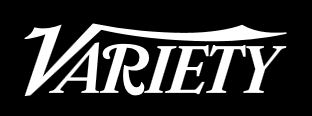Composer steps into spotlight with ‘Mama’
Laura Karpman brings Hughes to Hollywood Bowl

Jon Burlingame August 21, 2009
For years, composer Laura Karpman toiled in the background as a composer for films, TV and games, winning four Emmys along the way. But with “Ask Your Mama,” her massive, multimedia work about the African-American experience, having its West Coast premiere Aug. 30 at the Hollywood Bowl, she steps into the spotlight.
Based on an epic 1961 poem by Langston Hughes, the 104-minute score boasts an eclectic lineup including opera star Jessye Norman, jazz singer Nnenna Freelon, hip-hop band the Roots, and the Hollywood Bowl Orchestra (George Manahan will conduct). Thanks to a recording Karpman discovered during her two years of research and writing, Hughes’ voice can be heard during portions of the show.
Hughes subtitled his work “12 Moods for Jazz,” but, Karpman points out, he didn’t mean that literally. “Hughes lays out exactly what the music should sound like,” she says. “He literally ‘scores’ the poem. He asks for flutes, African drums, hunting horns, delicate German lieder. The references cross the musical spectrum.”
Karpman collaborated with Norman throughout the writing process. “One of the very first things that we said we wanted to do was to have a conversation about race through music,” says the composer.
Adds Norman: “Langston Hughes had as much reverence for Ornette Coleman as he had for Marian Anderson. He understood the importance of Jackie Robinson as much as that of Duke Ellington. I consider this work an opera, because it encompasses so much.”
Threaded throughout are projected images of the black American experience, from Harriet Tubman and Sojourner Truth to Charlie Parker and Bojangles Robinson. Karpman and filmmaker Kate Hackett have reconceived and re-edited the version that ran during its March 16 Carnegie Hall premiere, to clarify historical references in the text.
Karpman says she’d like to turn “Ask Your Mama” into a feature film, a la Philip Glass’ “Koyaanisqatsi,” in which music and image are equally important. “Creating a piece of music that crosses genres,” she says — “jazz, classical, hip-hop — to see all of them interact together in a meaningful way, is transformative.”
See the full story

